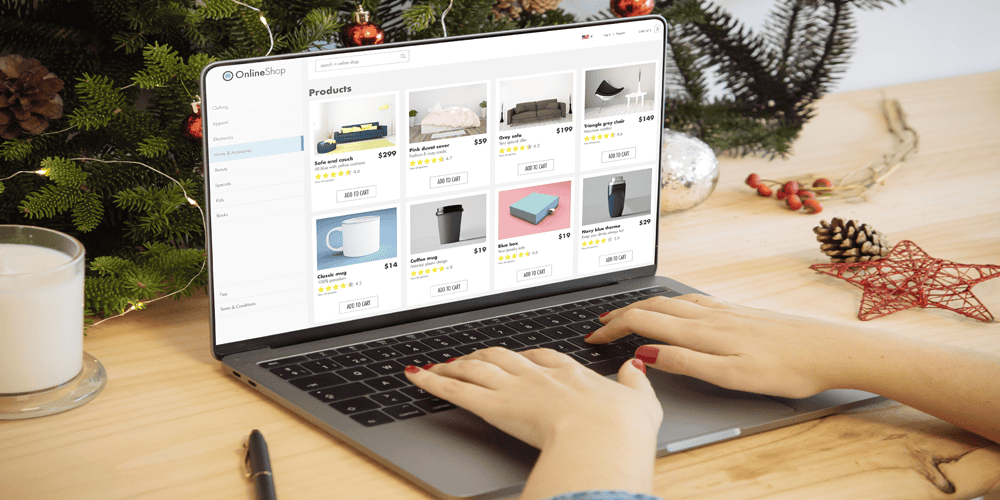A Guide to Creating a Conversion-Driven Sales Website
I. Introduction
Having an online presence is essential for businesses of all sises. A conversion-driven sales website serves as a virtual storefront, attracting visitors and compelling them to make purchases. Such websites are meticulously crafted to guide users through a journey that culminates in a sale.

A. Definition of a Conversion-Driven Sales Website
A conversion-driven website is designed with one primary goal: to convert visitors into paying customers. Every element, from layout to content, is optimised to encourage users to take action, whether it’s making a purchase, signing up for a newsletter, or contacting customer service.
B. Importance of having a conversion-driven website for online sales
The importance of a conversion-focused approach lies in its ability to turn traffic into revenue. In the competitive landscape of e-commerce, a website that effectively converts is more likely to succeed. It builds brand trust, maximises return on investment, and ensures a steady flow of sales.
II. Webpage Design for Conversion-Driven Sales
Designing a website that converts requires an understanding of user psychology and behavior. An effective design appeals to the target audience, providing an intuitive and satisfying user experience that encourages users to engage with the site.
A. Importance of user-friendly and visually appealing design
User-friendly designs prioritise the user’s experience. A visually appealing site can capture attention, but it must also be easy to navigate to keep users on the page. The balance of aesthetics and usability is crucial for reducing bounce rates and increasing the likelihood of conversion.
B. Utilising simple navigation for easy user experience
Simple navigation is the backbone of a user-friendly website. Clear menus, well-organised pages, and a logical structure ensure that users can find what they’re looking for without frustration. This ease of use directly influences the decision to make a purchase.
C. Integration of trust symbols for building customer confidence
Trust symbols, such as security badges, endorsements, and customer reviews, serve as assurances to potential buyers. They signify credibility and reliability, which are key factors in a customer’s willingness to complete a transaction on your site.
III. Product Pages and Online Sales
Product pages are where the magic happens. These are the pages that showcase what you’re selling and need to be finely tuned to persuade visitors to buy. The content, images, and layout of product pages play pivotal roles in influencing purchasing decisions.
A. Optimising product pages for conversion
Optimisation of product pages involves high-quality images, detailed descriptions, clear pricing, and visible calls to action (CTAs). Each element should be presented in a way that answers potential questions and overcomes objections, easing the path to purchase.
B. Strategies for boosting online sales through effective presentation
Effective presentation of products goes beyond mere aesthetics. It encompasses strategic placement of reviews, recommendations for related products, and highlighting unique selling points. These strategies collectively enhance the perceived value of the product and encourage sales.
IV. SEO and Internal Links
Search engine optimisation (SEO) and internal linking are critical components of a successful online presence. SEO increases visibility and drives traffic, while internal links help maintain user engagement and lead visitors towards making a purchase.
A. Importance of search engine optimisation for driving traffic
SEO involves optimising your website so that it ranks higher in search engine results for relevant keywords. This increased visibility leads to more organic traffic, which is a key ingredient in the recipe for more conversions.
B. Utilising internal links to guide visitors towards conversions
Internal links connect different pages within your website, guiding users toward high-conversion areas. They also contribute to a hierarchical structure that search engines favor, improving SEO and user experience simultaneously.
V. Checkout Process Optimisation
An optimised checkout process is essential for sealing the deal. A cumbersome checkout can lead to cart abandonment, whereas a smooth and fast process can increase the chance of completing a sale.
A. Ensuring fast and efficient checkout process
To ensure a quick checkout, steps must be intuitive and minimal. Information fields should be auto-filled where possible, and loading times kept short. These adjustments reduce friction and make the final steps of purchasing as painless as possible.
B. Providing guest checkout options for streamlined user experience
Guest checkout options cater to users who prefer not to create an account. Offering this option removes a potential barrier to purchase, catering to the convenience that online shoppers often seek.
VI. Site Speed and Maintenance
Site speed and proper maintenance are critical for sustaining a positive user experience and high conversion rates. Users expect fast loading times, and search engines favor websites that are well-maintained and updated regularly.
A. Importance of site speed for retaining visitor interest
Site speed has a direct impact on user satisfaction. Slow-loading sites test the patience of visitors, increasing bounce rates. A swift website keeps users engaged and moving smoothly towards conversion.
B. Regular maintenance and optimisation for sustained performance
Maintenance involves updating content, fixing broken links, and ensuring that all features function correctly. Regular optimisation efforts help in keeping the site responsive and secure, which in turn supports a stable conversion rate.
VII. Conversion Driven Sales Website
The creation a conversion-driven sales website involves a multi-faceted approach. From design to checkout, each element plays a significant role in the overall effectiveness of the site. By following these foolproof steps, businesses can build websites that not only attract visitors but convert them into loyal customers.





